Contents
| |||||
| Centuries: | |||||
|---|---|---|---|---|---|
| Decades: | |||||
| See also: | List of years in Norway | ||||
Events in the year 1387 in Norway.
| |||||
| Centuries: | |||||
|---|---|---|---|---|---|
| Decades: | |||||
| See also: | List of years in Norway | ||||
Events in the year 1387 in Norway.
| | This section is empty. You can help by adding to it. (September 2012) |
| | This section is empty. You can help by adding to it. (September 2012) |
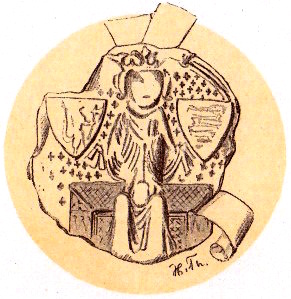
Olaf II of Denmark was King of Denmark as Olaf II from 1376 and King of Norway as Olav IV from 1380 until his death. Olaf was the son of Queen Margaret I of Denmark and King Haakon VI of Norway, and grandson of kings Magnus IV of Sweden and Valdemar IV of Denmark.

Saint Olaf, also called Olaf the Holy, Olaf II, Olaf Haraldsson, and Olaf the Stout, was King of Norway from 1015 to 1028. Son of Harald Grenske, a petty king in Vestfold, Norway, he was posthumously given the title Rex Perpetuus Norvegiae and canonised at Nidaros (Trondheim) by Bishop Grimketel, one year after his death in the Battle of Stiklestad on 29 July 1030. His remains were enshrined in Nidaros Cathedral, built over his burial site. His sainthood encouraged the widespread adoption of Christianity by Scandinavia's Vikings/Norsemen.
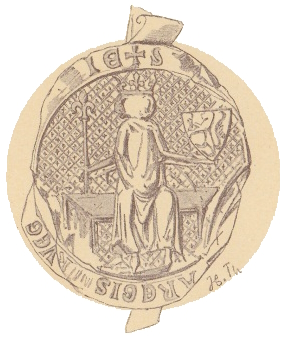
Haakon VI, also known as Håkan Magnusson, was King of Norway from 1343 until his death and King of Sweden between 1362 and 1364. He is sometimes known as Haakon Magnusson the Younger to distinguish him from his great-grandfather, Haakon V.
Olaf or Olav is a Dutch, Polish, Scandinavian and German given name. It is presumably of Proto-Norse origin, reconstructed as *Anu-laibaz, from anu "ancestor, grand-father" and laibaz "heirloom, descendant". Old English forms are attested as Ǣlāf, Anlāf. The corresponding Old Novgorod dialect form is Uleb. A later English form of the name is Olave.
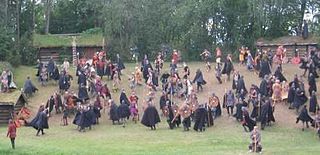
Saint Olav Drama is an outdoor theatre performance played every end of July in Stiklestad in Verdal Municipality, Norway.
The Kingdom of Norway as a unified realm dates to the reign of King Harald I Fairhair in the 9th century. His efforts in unifying the petty kingdoms of Norway resulted in the first known Norwegian central government. The country, however, soon fragmented and was collected into one entity in the first half of the 11th century, and Norway has retained a monarchy since that time. Traditionally, it has been viewed as being ruled by the Fairhair dynasty, though modern scholars question whether the eleventh century kings and their successors were truly descendants of Harald.

Dietrich or Theoderic of Oldenburg was a feudal lord in Northern Germany, holding the counties of Delmenhorst and Oldenburg. He was called "Fortunatus", as he was able to secure Delmenhorst for his branch of the Oldenburgs.

The House of Mecklenburg, also known as Nikloting, is a North German dynasty of Polabian origin that ruled until 1918 in the Mecklenburg region, being among the longest-ruling families of Europe. Queen Juliana of the Netherlands (1909–2004), former Queen of the Netherlands (1948–1980), was an agnatic member of this house.

The Royal Norwegian Order of Saint Olav is a Norwegian order of chivalry instituted by King Oscar I on 21 August 1847. It is named after King Olav II, known to posterity as St. Olav.

The Fairhair dynasty was a family of kings founded by Harald I of Norway which united and ruled Norway with few interruptions from the latter half of the 9th century. In the traditional view, this lasted until 1387, however, many modern scholars view this rule as lasting only three generations, ending with Harald Greycloak in the late 10th century. The moniker "Fairhair dynasty" is a retrospective construction: in their lifetime what little traces there are refer to them consistently as "Ynglings".
The Norwegian order of precedence is the hierarchy of officials in the Government of Norway used to direct seating and ranking on formal occasions, decided by the King, which came into effect from 1 July 1993.
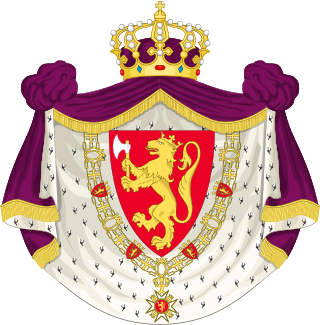
The Norwegian monarch is the head of state of Norway, which is a constitutional and hereditary monarchy with a parliamentary system. The Norwegian monarchy can trace its line back to the reign of Harald Fairhair and the previous petty kingdoms which were united to form Norway; it has been in unions with both Sweden and Denmark for long periods.

Margaret Fredkulla was a Swedish princess who became successively queen of Norway and Denmark by marriage to kings Magnus III of Norway and Niels of Denmark. She was also de facto regent of Denmark.
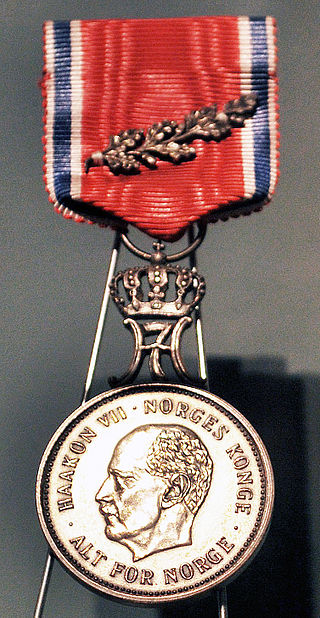
The St. Olav's Medal and the St. Olav's Medal With Oak Branch were instituted by King Haakon VII of Norway on 17 March 1939. They are awarded in recognition of "outstanding services rendered in connection with the spreading of information about Norway abroad and for strengthening the bonds between expatriate Norwegians and their home country".

The Sudreim claim was an entitlement to the throne of the Kingdom of Norway held among members of the powerful and influential House of Sudreim in the late Middle Ages.
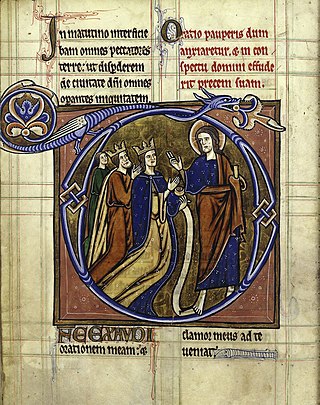
Margaret Skulesdatter (1208–1270) was a Norwegian queen consort, spouse of King Haakon IV of Norway and queen consort of Norway from 1225 to 1263.
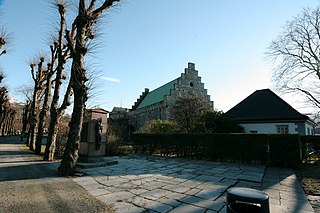
Christ Church on Holmen was the main medieval era cathedral of Bergen, Norway. Its site was near Haakon's hall (Håkonshallen) and Bergenhus Fortress .
The Hardrada dynasty was a powerful royal dynasty which ruled, at various times in history, the Kingdom of Norway, the Kingdom of Mann and the Isles, and the Earldom of Orkney.
Events in the year 1380 in Norway.
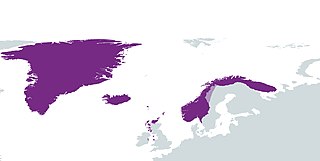
The term Norwegian Realm and Old Kingdom of Norway refer to the Kingdom of Norway's peak of power at the 13th century after a long period of civil war before 1240. The kingdom was a loosely unified nation including the territory of modern-day Norway, modern-day Swedish territory of Jämtland, Herjedalen, Ranrike (Bohuslän) and Idre and Särna, as well as Norway's overseas possessions which had been settled by Norwegian seafarers for centuries before being annexed or incorporated into the kingdom as 'tax territories'. To the North, Norway also bordered extensive tax territories on the mainland. Norway, whose expansionism starts from the very foundation of the Kingdom in 872, reached the peak of its power in the years between 1240 and 1319.